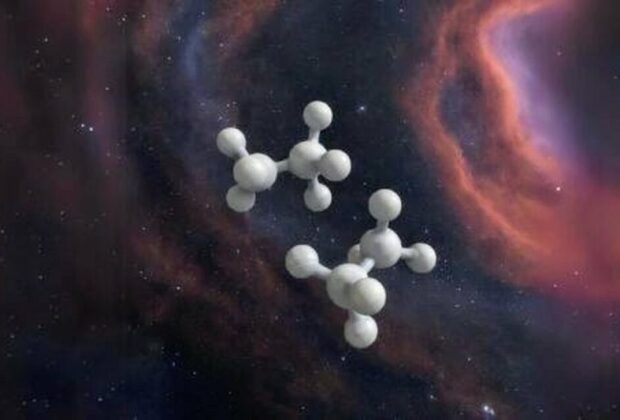The inventory of substances discovered in space keeps expanding. Amino acids and other essential components of life have been discovered by astronomers on comets, asteroids, and even freely floating in space. Another complicated chemical has recently been discovered by researchers to add to the list.
2-methoxyethanol is the name of the new compound (CH3OCH2CH2OH). It is one of many methoxy compounds discovered in space by scientists. However, it’s among the biggest and most intricate ones ever found, including 13 atoms.
The McGuire Group is a group of scientists that focuses on finding compounds in space. 2. The discovery of 2-methoxyethanol was made in collaboration with researchers from the McGuire Group and other institutions in Florida and France.
Astrophysical Journal Letters is where the researchers reported their results. The title of the paper is “Rotational Spectrum and First Interstellar Detection of 2-methoxyethanol Using ALMA Observations of NGC 6334I.” Graduate student Zachary Fried of MIT’s McGuire Group is the main author.
Lead author Fried stated, There are a number of ‘methoxy’ molecules in space, like dimethyl ether, methoxymethanol, ethyl methyl ether, and methyl formate, but 2-methoxyethanol would be the largest and most complex ever seen,”
The big molecule was not discovered by the researchers by accident. It was discovered as a result of a determined attempt to find novel compounds in space. The foundation of it all was machine learning. A machine-learning model recommended that they search for 2-methoxyethanol in 2023. The next stage was the laboratory, where scientists conducted tests to determine and examine the rotational spectrum of the molecule on Earth.
“We do this by looking at the rotational spectra of molecules, the unique patterns of light they give off as they tumble end-over-end in space,” explained Fried. “These patterns are fingerprints (barcodes) for molecules. To detect new molecules in space, we first must have an idea of what molecule we want to look for, then we can record its spectrum in the lab here on Earth, and then finally we look for that spectrum in space using telescopes.”
The molecule’s spectrum was studied by the researchers across a broad range of frequencies, from sub-millimeter wave to microwave (about 8 to 500 gigahertz).
After obtaining the data, the scientists used the Atacama Large Millimetre/sub-millimetre Array, or ALMA. NGC 6334I and IRAS 16293-2422B are two star-forming regions from which ALMA collected data. The analysis of ALMA’s observations was conducted by researchers from the McGuire Group, the National Radio Astronomy Observatory, and the University of Copenhagen.
“Ultimately, we observed 25 rotational lines of 2-methoxyethanol that lined up with the molecular signal observed toward NGC 6334I (the barcode matched!), thus resulting in a secure detection of 2-methoxyethanol in this source,” stated Fried. “This allowed us to then derive physical parameters of the molecule toward NGC 6334I, such as its abundance and excitation temperature. It also enabled an investigation of the possible chemical formation pathways from known interstellar precursors.”
On Earth, 2-methoxyethanol is mostly utilized as a solvent. Toxic to testicles and bone marrow. Its finding, however, is unrelated to its situation on Earth.
Neither is the big molecule a component of life. Its magnitude and intricacy make it noteworthy. Understanding how chemistry changes and creates big molecules in areas where stars and planets are developing is of interest to scientists.
According to Fried, “Our group tries to understand what molecules are present in regions of space where stars and solar systems will eventually take shape,” “This allows us to piece together how chemistry evolves alongside the process of star and planet formation.”
Since molecular complexity is a defining characteristic of life, it makes sense that scientists would wish to comprehend molecular complexity in space. As of 2021, the number of molecules greater than 13 atoms discovered outside of our solar system was only six. Many were discovered by McGuire’s crew.
Step one is to find them. Determining where and how they originate is the next step. All complicated chemistry has something to teach us about complex chemistry in general, even though there are no direct connections between 2-methoxyethanol and life.
According to Fried, “Continued observations of large molecules and subsequent derivations of their abundances allows us to advance our knowledge of how efficiently large molecules can form and by which specific reactions they may be produced,” “Additionally, since we detected this molecule in NGC 6334I but not in IRAS 16293-2422B, we were presented with a unique opportunity to look into how the differing physical conditions of these two sources may be affecting the chemistry that can occur.”








